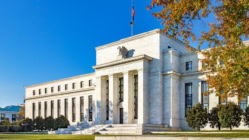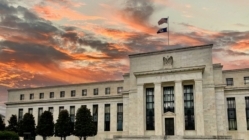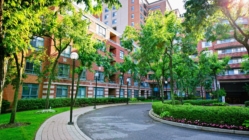
EVERYONE expected the entire country and much of the world to be mired in a horrible recession by now.
And yet, we’re still growing.
I blogged about the reasons why the recession has been delayed in May: “Dude, Where’s The Recession You Keep Harping About?”
The reason cited in that blog was the fact our economy has more recently been driven by income (higher wages and government stimulus) as opposed to credit, e.g. cash-out refinances like we saw prior to 2008.
The other reason pointed out by Alf Peccatiello in a podcast yesterday is that businesses and consumers have been able to put off borrowing or refinancing at today’s higher rates (which won’t last, especially for businesses).
And now there is lots of talk about a recession being avoided altogether. The most recent All-In Podcast, is one example, as a few of the hosts think the Fed pulled off a miracle – stemming inflation without causing a recession.
And – in response to that, I still think “No way.” But, I could be wrong.
Recessions matter tremendously for all of us in real estate and mortgages because they result in much lower rates – which in turn will foster a frenzy of business for all of us; “mortgage rate lockdown” sellers will start to list a lot more homes and buyers will come out of the woodwork when they realize they can afford more.
SO THIS IS THE MAIN REASON I AM CONVINCED WE WILL STILL SEE A RECESSION: Massively inverted yield curves.
Stay with me, as this might be boring, but it is very important! 😊
A healthy or normal yield curve is one where longer-term bonds have higher yields or interest rates than shorter-term bonds. For example, the 2 Year Treasury might have a yield of 3% while the 10 Year might have a yield of 4%.
Longer terms mean more risk, so investors demand higher returns.
BUT – when a recession is expected, the yield curve is not normal; it is inverted, meaning shorter-term bonds have HIGHER yields than longer-term bonds.
There are different types of yield curve comparisons, such as the 2 Year/10 Year or the 3 Month/10 Year. The 2 Year/10 Year first inverted in April of 2022 – giving strong future recession signals.
But – the more telling inversion is the 3 Month/10 Year spread – and it inverted or went negative (3 Month yields exceeded 10 Year yields) in October of last year.
Longer-term yields are lower than shorter-term yields for two reasons: (1) the Fed has been pushing up short-term rates, as we all know; and (2) investors, fearing a recession, are still parking the bulk of their funds in bonds instead of stocks, and that in turn increases the demand for bonds, keeping prices higher and yields lower.
AND EVERY TIME THE 3 MONTH YIELD HAS EXCEEDED THE 10 YEAR YIELD SINCE WWII – WE HAVE SLID INTO RECESSION AFTERWARDS!!
So the question is, when? Historically, there has been a 5 – 17 month lag since the first inversion pops up to the time when the recession fully sets in – with the average being about 12 months.
So, if averages hold, we are looking at October to November for full-on recession signs, as this tweet implies.
Here is another tweet saying the same thing.
And here is a great article explaining yield curves and much of what I explained above – in case any readers are looking for a bit more explanation and/or authority.
So yes, I could be wrong, and we might have a soft landing with no recession, BUT – I SERIOUSLY DOUBT THE YIELD CURVES ARE WRONG FOR THE FIRST TIME EVER!
Jay Voorhees
Founder | JVM Lending
(855) 855-4491 | DRE# 1197176, NMLS# 310167
























